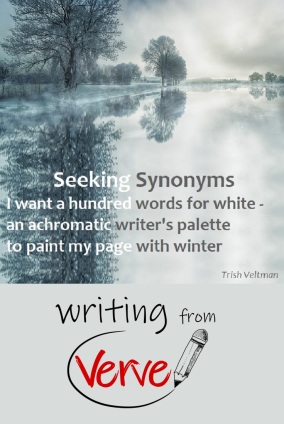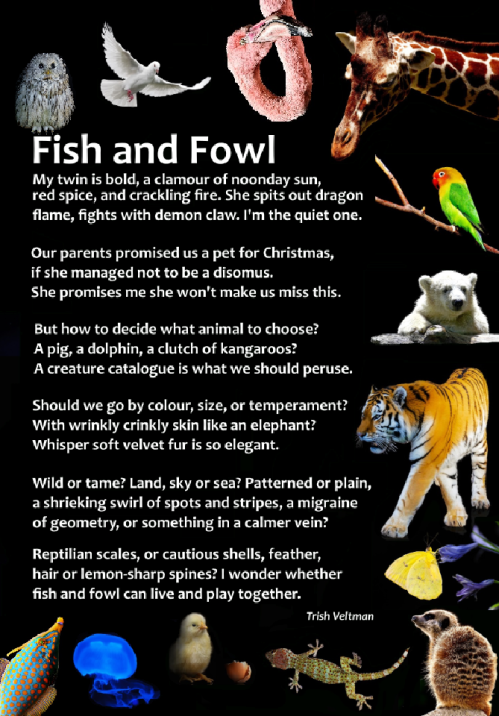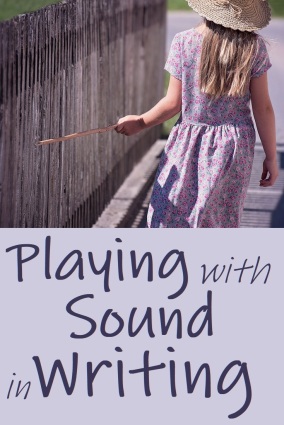Last night was a crap-television night. We haven’t signed up to Netflix or Lightbox, so rely on whatever offerings the free-to-air channels serve. Yesterday’s menu looked more like leftover crusts of sandwiches from lunch than carefully prepared cuisine. Often I’d just tuck right in to a book instead but last night we treated ourself to a takeaway instead – the DVD from the library type of takeaway.
If you haven’t watched the BBC miniseries Wolf Hall, based on Hilary Mantel’s books Wolf Hall and Bring Up the Bodies, you’ve a wonderful treat waiting. It portrays Thomas Cromwell’s rise from poverty to power and his enormous influence on events in England during part of Henry VIIIs reign. Although it is set during the dissolution of monasteries which Cromwell was responsible for, the story focuses most on Cromwell’s management of Henry’s divorce from Katharine of Aragon, and subsequent marriage to Anne Boleyn.
 We ended up binge-watching the entire series over two evenings, we were so engaged with the story. I’m not going to review it here, or give any spoilers, although I might let slip that at the end of the series, Anne Bole… no, no spoilers! Why I’m writing about the programme is because – poetry. Wolf Hall is beautifully scripted. The performances, from a stellar cast, were outstanding. The soundtrack was potent – a skillful and particularly subtle portrayal of mood and tension. This is what made me think of poetry – specifically the musicality of poetry.
We ended up binge-watching the entire series over two evenings, we were so engaged with the story. I’m not going to review it here, or give any spoilers, although I might let slip that at the end of the series, Anne Bole… no, no spoilers! Why I’m writing about the programme is because – poetry. Wolf Hall is beautifully scripted. The performances, from a stellar cast, were outstanding. The soundtrack was potent – a skillful and particularly subtle portrayal of mood and tension. This is what made me think of poetry – specifically the musicality of poetry.
Just as a music soundtrack portrays mood and tension in visual storytelling, we can use language to create a soundscape that portrays mood and tension in our writing. Common literary devices used for creating sound in writing are rhyme, and repetition of similar and/or identical sounds. There are several good reasons to do this:
- rhymes and repeated sound patterns are effective mnemonics, as repetition aids recall. Memorable writing makes a stronger impression on readers and makes your message more powerful
- music evokes strong, emotive responses in people – echoing musicality with word sounds achieves a similar effect, creating a more profound response in readers
- enhances flow and pace of writing
- helps set mood and atmosphere
You probably remember learning some, if not all of these literary devices studying poetry in English Literature lessons at school. But they are not only used in poetry. They are effective for any writer to incorporate in any kind of writing.
Alliteration
Alliteration is repetition of the same initial letters, and the same initial sounds for words used in close proximity. Alliteration uses either vowels or consonants:
 Winter unfolds white
Winter unfolds white
lace over railway wasteland
early foxglove waits
In this haiku I wrote on a train journey after seeing a single foxglove growing beside the tracks, as if oblivious to the time of year and the thick frost, I played with sound in a couple of ways – alliteration with the w sound and assonance with the a sound.
Most tongue twisters use alliteration:
she sells sea shells on the sea shore
Many children’s books and cartoon characters use alliteration in titles and names: Mickey Mouse, Donald Duck, Sesame Street, Peppa Pig etc.
Newspaper headlines often use alliteration. Here are a couple I saw today in Stuff, an online newspaper in New Zealand:
A Remarkable Aussie Rescue
Back the Black Caps with a High Five
This headline also uses rhyme and assonance, so quite a hat trick going on here.
Assonance
 Assonance is the repetition of vowel sounds in quick succession:
Assonance is the repetition of vowel sounds in quick succession:
I‘d like a hundred words for white –
an achromatic writer’s palette
to paint my page with winter
This was a response to a writing exercise I was given. The task? Write a poem in 24 syllables including the word achromatic. I played with both assonance in the internal sounds like this, setting up echoes between words that flow through the poem. What I love about writing tasks with tight constraints like this is the opportunity to experiment, capturing a passing thought in a tiny poem. Any excuse to play with language!
Cacophony
Cacophony is the use of words in a phrase or sentence that suggest harsh, jarring sounds:
Footsteps clattered up the stairs behind me and the echo ricocheted like gunshot in the concrete stairwell.
sharp, metallic jangles like metal spoons clattered inside steel saucepans
It is an effective tool for creating mood in a story, for example, a dark, menacing atmosphere to create fear in a story.
 Consonance
Consonance
Consonance is the repetition of consonant sounds, often at the ends of words:
I had left the spares at home.
I didn’t mind. I’d always thought
a desert island would be right
up my street. I explored
while he strip-searched sand dunes.
Euphony
The opposite of cacophony, euphony is the use of words and phrases that create appealing, melodious sounds.
This is so dependent on the eye – and ear – of the beholder, but I know these beautiful lines from William Blake’s Auguries of Innocence are amongst my favourites:
“To see a world in a grain of sand
and a heaven in a wild flower
hold infinity in the palm of your hand
and eternity in an hour.”
Onomatapoeia
Words that sound like their meaning:
buzz, bang, roar, snap, zap etc
Rhyme
Words, or ends of words, that have corresponding sounds.
Half-Rhyme/ Slant Rhyme
Words that almost rhyme, but not quite. Often the end consonant sounds correspond, but the beginning vowel sound does not. In a fully rhyming poem, a slant rhyme is often used rather than forcing a full rhyme with distorted grammar/ word order.
When I write poems, I don’t tend to use rhyme as I prefer free verse, and the subtleties that other literary devices like alliteration etc offer. Often I find rhyme overwhelms the content in a poem. But I always like to flex my writing muscles with a challenge – and with Fish and Fowl the challenge was to write a poem in the form of a Muzdawidj (a Persian form), about animals and for children. I had a lot of fun with this!
Sibilance
Sibilance is a specific form of alliteration using soft consonants that produce a slight hissing sound, such as f, s, z, x, soft c, sh, ch, th:
Bobbing as sure as sand pipers
through sky-scraping sand dunes
All of these literary devices, while mostly associated with poetry, when used well will enhance most types of writing. Which do you already use? Which would you like to try using more? Let me know in the comments section below.


Hhhhmmmm….I think I mostly rely on rhyme. To be honest, it’s the one I feel most comfortable using!
LikeLiked by 1 person
Try some of the others – you might surprise yourself!
LikeLike
I’ve been so impressed with how you use these in all your writing. You’ve added a few sound devices here that I don’t normally talk about with my students. We study complete and partial rhymes, internal and end rhyme, alliteration, assonance, consonance, and onomatopoeia. This would be a great read for my higher-achieving kids who need a little stretch!
LikeLiked by 1 person
Thank you. I’m sure the high achievers would love these!
LikeLike
I had no clue what Sibilance was before reading this! I’ve seen it, but didn’t know it actually had a name. I’m always learning something when I come to visit your blog, Trish! I’ll be coming back to this when I am ready to start doing more creative writing, because I think it will help me understand and achieve a better writing style.
LikeLiked by 1 person
Thanks, Erica 🙂 I’ll look forward to seeing some of your creative writing
LikeLike
There is always something new that I get to learn from your blog posts. Most of these terms I wasn’t even knowing. Thanks! 🙂
LikeLiked by 1 person
You’re welcome 🙂
LikeLike
What a great bunch of writing tips. I like to use alliteration in my writing but realize in reading this there are many other techniques I need to try out. I also realized I might be using some of these and didn’t even know it. 🙂
LikeLiked by 1 person
Thank you. Yes, I think we do use a lot of them sub-consciously – just because we know what sounds good!
LikeLike
what a great write up! I love to use alliteration, consonance and half rhymes when writing poetry as I find it works well with the way my writing flows. I’ve been writing a lot of sci-fi and horror stories lately and find that putting cacophony to work has been a great help. Although admittedly, I didn’t realise that this is what that technique was called! Learn something new everyday!
Thanks for sharing your awesome tips with us!
LikeLiked by 1 person
I always find these techniques satisfying to use – love playing with words
LikeLike
I tend to use alliteration a bit myself in my writings, although you certainly have given me a few more techniques to think about here. Using a variety of tried and tested techniques is always a great way to insert some further interest in your writing.
LikeLiked by 1 person
Alliteration is my favourite but it’s best to have a few different techniques to use
LikeLiked by 1 person
I love me some alliteration! It’s always my default when I’m trying to come up with a title for my writing. But thanks for the reminder on the other literary devices here. Cacophany needs to be used more!
https://teaspoonofadventure.com
LikeLiked by 1 person
You’re welcome. I think alliteration is my fave too
LikeLike
Thanks so much for taking the time to share this with us. My husband and I are writing a book and this should help spice up our writing. PS My husband is very creative with his writing, but mine is very pedantic. And I need all the help I can get.
LikeLiked by 1 person
You’re welcome – pleased it’s helpful for you
LikeLike
Interesting Trish. Big fan of rhyming here.
Ryan
LikeLiked by 1 person
I love alliteration 🙂
LikeLike
I love a well worded script or novel. When the writer can make the words sound like music, I could just sit back and listen to/ read that all day. Great tips!
LikeLiked by 1 person
I think it’s often the difference between a good story and a story you just can’t put down!
LikeLike